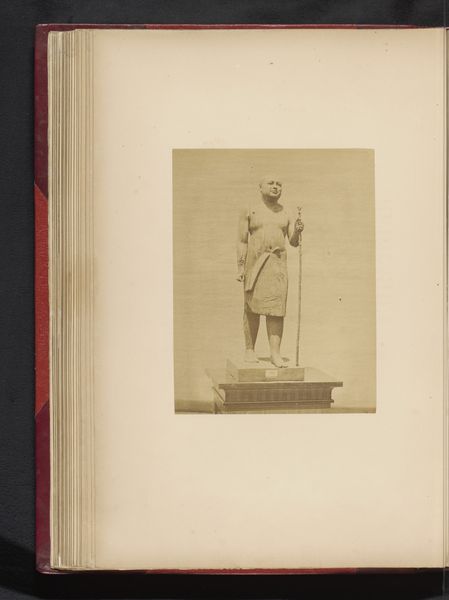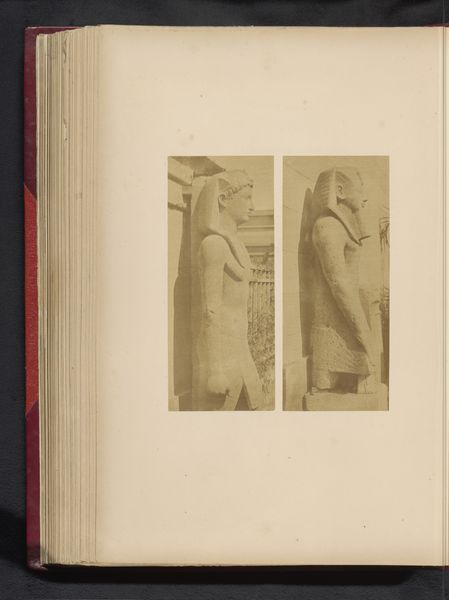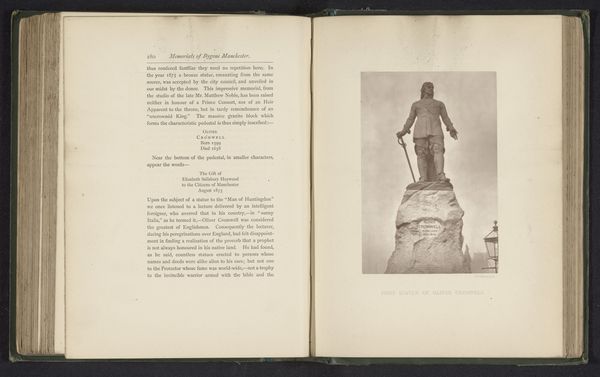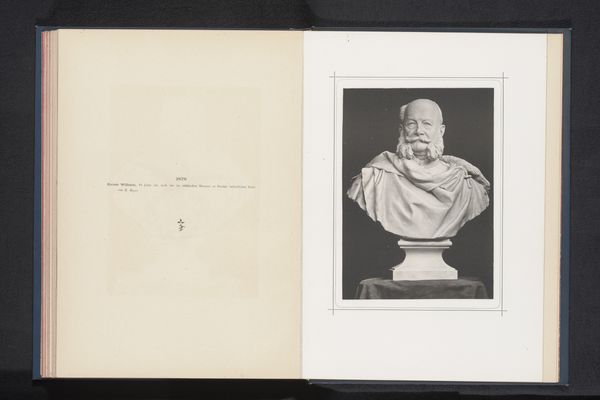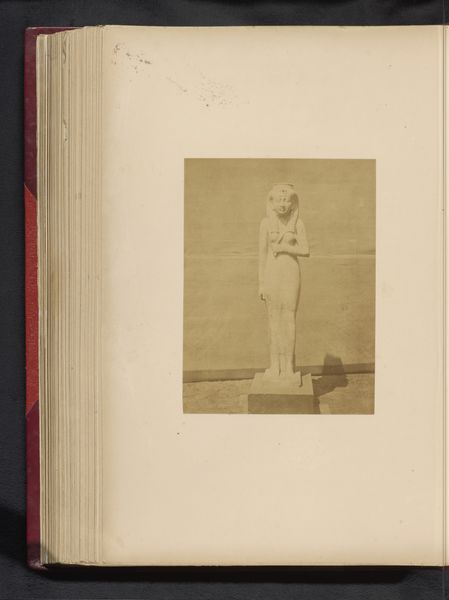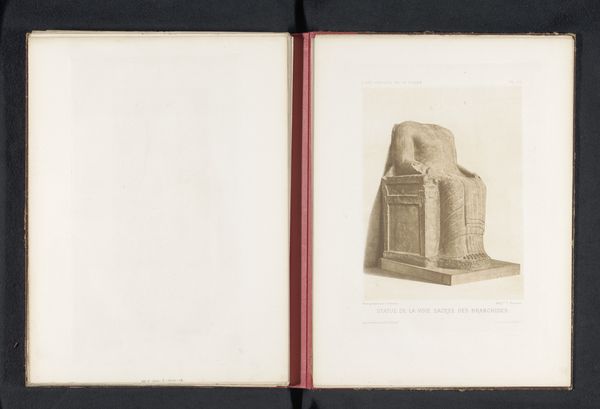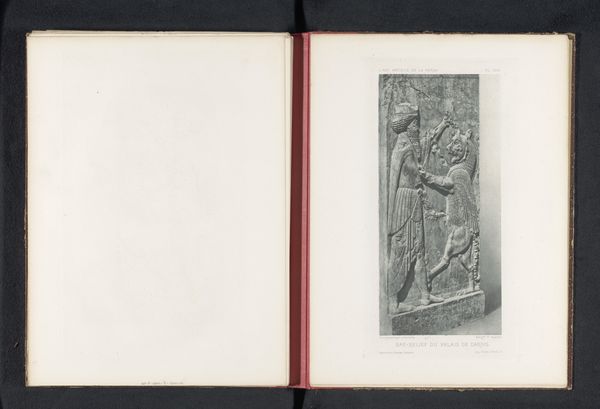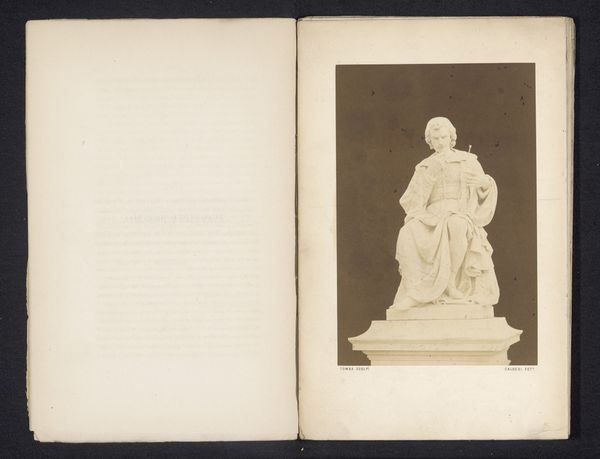
Standbeeld van de farao Chefren in het Boulaq Museum in Caïro, Egypte before 1871
0:00
0:00
photography, sculpture, gelatin-silver-print
#
portrait
#
ancient-egyptian-art
#
photography
#
ancient-mediterranean
#
sculpture
#
gelatin-silver-print
Dimensions: height 252 mm, width 194 mm
Copyright: Rijks Museum: Open Domain
This photograph by Hippolyte Délié captures the statue of the Pharaoh Chefren in the Boulaq Museum, Cairo. The sepia tone lends the image a sense of antiquity, drawing our attention to the statue's severe and formal qualities. The statue itself is a study in geometric stability: its rigid, frontal pose, the cubic throne, and the pharaoh's block-like torso all contribute to an impression of immutable power. The figure's smooth surfaces and simplified forms suggest an underlying structure, reducing the body to its most essential shapes. This reduction echoes broader artistic and philosophical concerns with uncovering fundamental truths through abstraction. Consider how the photograph itself destabilizes the statue's established meanings. The soft focus and sepia tone, combined with its placement within a book, invite a reinterpretation. No longer just a symbol of pharaonic authority, the statue becomes a semiotic signifier – a code open to new readings across time and cultures. This image serves not merely as a record but as an active participant in the statue’s evolving narrative, offering a fresh lens through which to view ancient power.
Comments
No comments
Be the first to comment and join the conversation on the ultimate creative platform.
